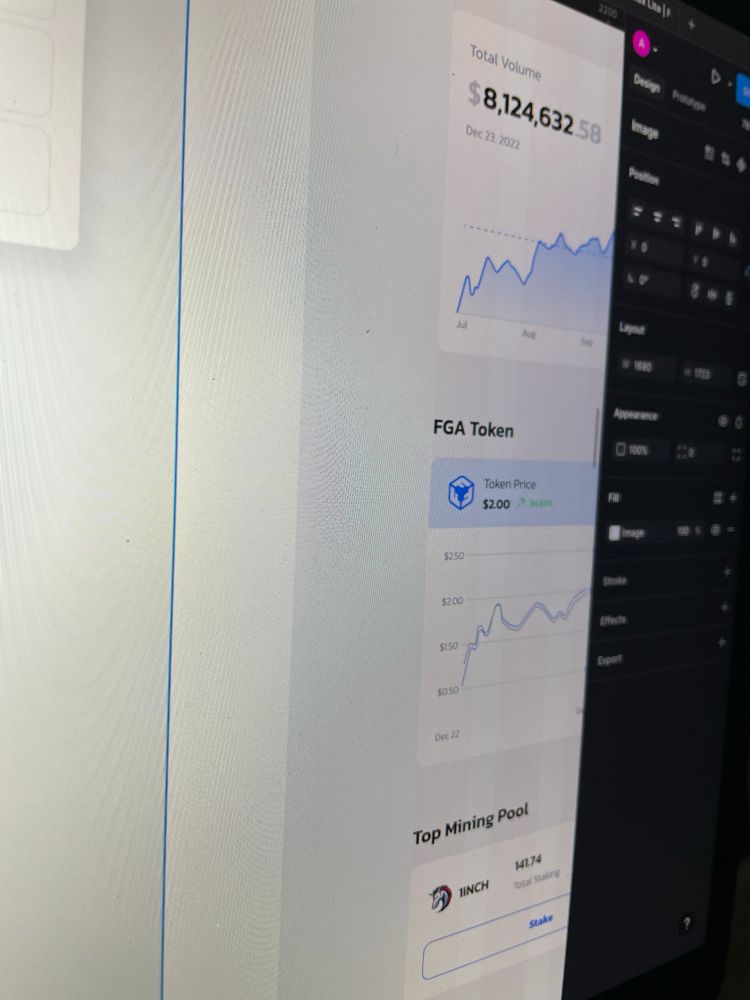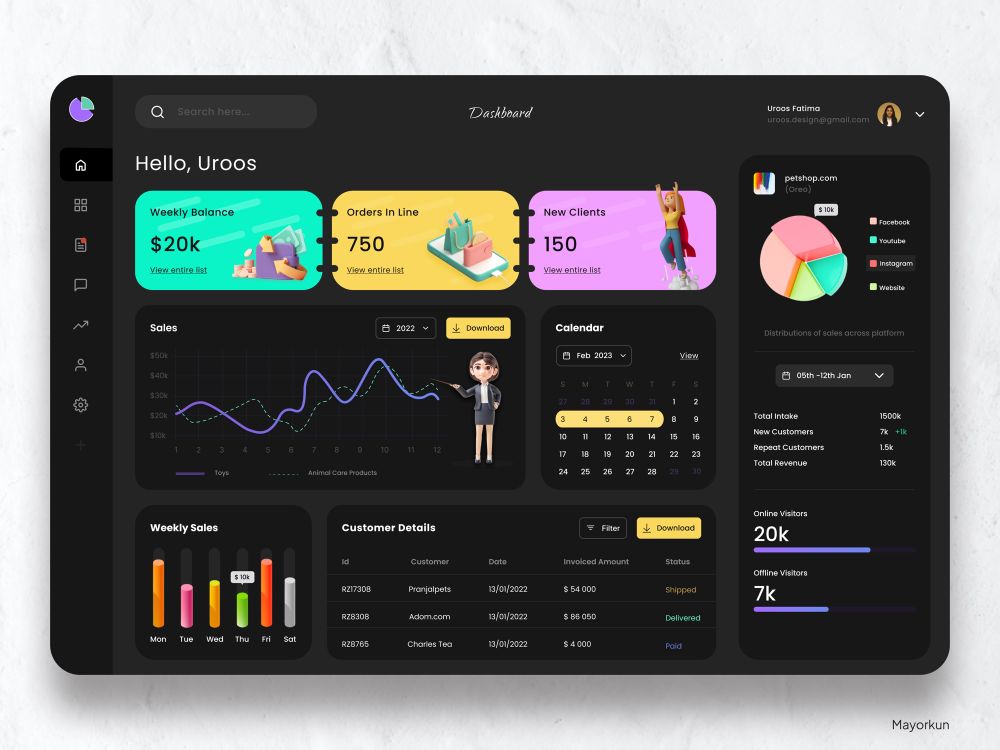
Portfolio: https://mayorkun.framer.website/




Over the last few years, I’ve shipped 10+ digital products from scratch using SwiftUI, React, and a whole lot of coffee.
Sounds basic.
Wasn’t.
The issue wasn’t intelligence, it was discipline: file paths, data truth, edge cases.
This is what building real tools for real people looks like.



Sounds basic.
Wasn’t.
The issue wasn’t intelligence, it was discipline: file paths, data truth, edge cases.
This is what building real tools for real people looks like.
So I explored the problem myself.
Researched flows.
Mapped friction.
Designed a unified product system concept.




So I explored the problem myself.
Researched flows.
Mapped friction.
Designed a unified product system concept.
Finally stabilized the entire bot, cleaned message routing, fixed WhatsApp Web conflicts, and got the Status-Intelligence Engine working.
Finally stabilized the entire bot, cleaned message routing, fixed WhatsApp Web conflicts, and got the Status-Intelligence Engine working.
Finally got the new Status Intelligence Engine working, it now understands WhatsApp Status replies, extracts the quoted text, and matches products like a real business assistant.


Finally got the new Status Intelligence Engine working, it now understands WhatsApp Status replies, extracts the quoted text, and matches products like a real business assistant.
Baileys connection is stable now and messages are flowing.
Still plenty of chaos in the code, but alpha is taking shape.
On to the next step.


Baileys connection is stable now and messages are flowing.
Still plenty of chaos in the code, but alpha is taking shape.
On to the next step.
I spent the weekend reworking it, tightened the structure, simplified the actions, made everything feel lighter and clearer.

I spent the weekend reworking it, tightened the structure, simplified the actions, made everything feel lighter and clearer.
Light/Dark mode, accents, bubble styles, all fully dynamic now.
It’s a tiny part of the UI, but these small details are what make a product feel right.
Still building, still iterating.

Light/Dark mode, accents, bubble styles, all fully dynamic now.
It’s a tiny part of the UI, but these small details are what make a product feel right.
Still building, still iterating.
Today I shipped the new Analytics Dashboard inside my WhatsApp AI Business Assistant, a tool I’m building for vendors who live on WhatsApp.
Clean KPIs, revenue charts, order insights.
It feels good to be back in momentum.
Shipping > waiting for perfect. 💚

Today I shipped the new Analytics Dashboard inside my WhatsApp AI Business Assistant, a tool I’m building for vendors who live on WhatsApp.
Clean KPIs, revenue charts, order insights.
It feels good to be back in momentum.
Shipping > waiting for perfect. 💚

A space where data isn’t just displayed… it talks back.
Where charts feel alive.
Where actions feel instant.
Where your strategy feels understood.

A space where data isn’t just displayed… it talks back.
Where charts feel alive.
Where actions feel instant.
Where your strategy feels understood.

This dashboard actually came from a simple frustration my client had:
“Our data is everywhere. We can’t see earnings, tasks, traffic, and project health in one place.”

This dashboard actually came from a simple frustration my client had:
“Our data is everywhere. We can’t see earnings, tasks, traffic, and project health in one place.”
I don’t just “design a dashboard.”
I sit with clients to understand:
What’s confusing them
What decisions they need to make
What story their data must tell
Then I build a UI that turns complex numbers into clear decisions.


I don’t just “design a dashboard.”
I sit with clients to understand:
What’s confusing them
What decisions they need to make
What story their data must tell
Then I build a UI that turns complex numbers into clear decisions.
Their problem:
They had tons of traffic data… but no way to understand bounce rate, visit duration, traffic sources, or monthly changes at a glance.
What I created:
A clean, soft-gradient dashboard showing:

Their problem:
They had tons of traffic data… but no way to understand bounce rate, visit duration, traffic sources, or monthly changes at a glance.
What I created:
A clean, soft-gradient dashboard showing:
Their problem:
Investors were asking for clean insight into income vs outcome, spending patterns, card activity, and user transactions, but their internal dashboards were messy and outdated.
What I created:
A sleek, modern interface with:

Their problem:
Investors were asking for clean insight into income vs outcome, spending patterns, card activity, and user transactions, but their internal dashboards were messy and outdated.
What I created:
A sleek, modern interface with:
Their problem:
They were getting hundreds of orders weekly but couldn’t track revenue trends, returning customers, marketing channels, and peak sales days. Everything was manual.
What I created:
A vibrant dashboard showing:

Their problem:
They were getting hundreds of orders weekly but couldn’t track revenue trends, returning customers, marketing channels, and peak sales days. Everything was manual.
What I created:
A vibrant dashboard showing:
This month I worked on three different dashboards for three completely different clients and all of them came to me with the same problem:
“Our data is everywhere… and nobody understands what’s going on.”

This month I worked on three different dashboards for three completely different clients and all of them came to me with the same problem:
“Our data is everywhere… and nobody understands what’s going on.”
If it’s on the cloud, scales, and stores user data that’s SaaS.
I’m building AI-powered SaaS products that think & grow with users (like my WhatsApp bot).
The future isn’t code it’s systems that learn.
#SaaS #AI #Startups #Automation



If it’s on the cloud, scales, and stores user data that’s SaaS.
I’m building AI-powered SaaS products that think & grow with users (like my WhatsApp bot).
The future isn’t code it’s systems that learn.
#SaaS #AI #Startups #Automation
Focus on simplicity, clarity and onboarding

Focus on simplicity, clarity and onboarding
Remember your mind is your biggest asset

Remember your mind is your biggest asset

👋 Hey I’m Mayorkun Ayanshina
I am a Product Designer & Software Developer building fast, modern AI-powered SaaS and MVPs ⚡ | Open to collaborations
GitHub: github.com/samuelayansh...
Design portfolio: mayorkun.framer.website
🫵


👋 Hey I’m Mayorkun Ayanshina
I am a Product Designer & Software Developer building fast, modern AI-powered SaaS and MVPs ⚡ | Open to collaborations
GitHub: github.com/samuelayansh...
Design portfolio: mayorkun.framer.website
🫵
“What is that thing I can do for you that will make you pay me $100-$1000”
Drop it in the comment 👇
You’d be doing a great favor by reposting this. Thanks
Let’s go…
“What is that thing I can do for you that will make you pay me $100-$1000”
Drop it in the comment 👇
You’d be doing a great favor by reposting this. Thanks
Let’s go…



